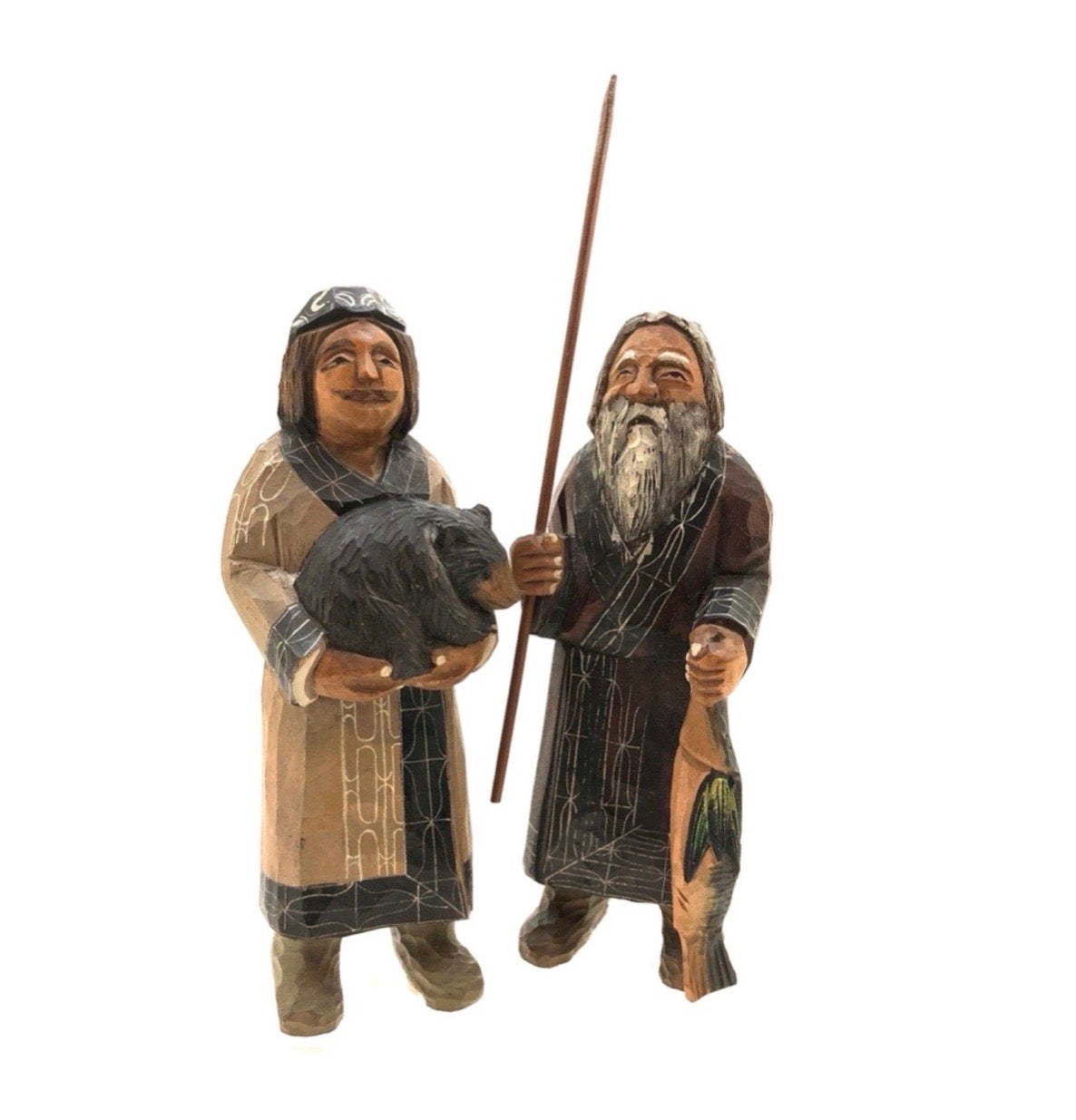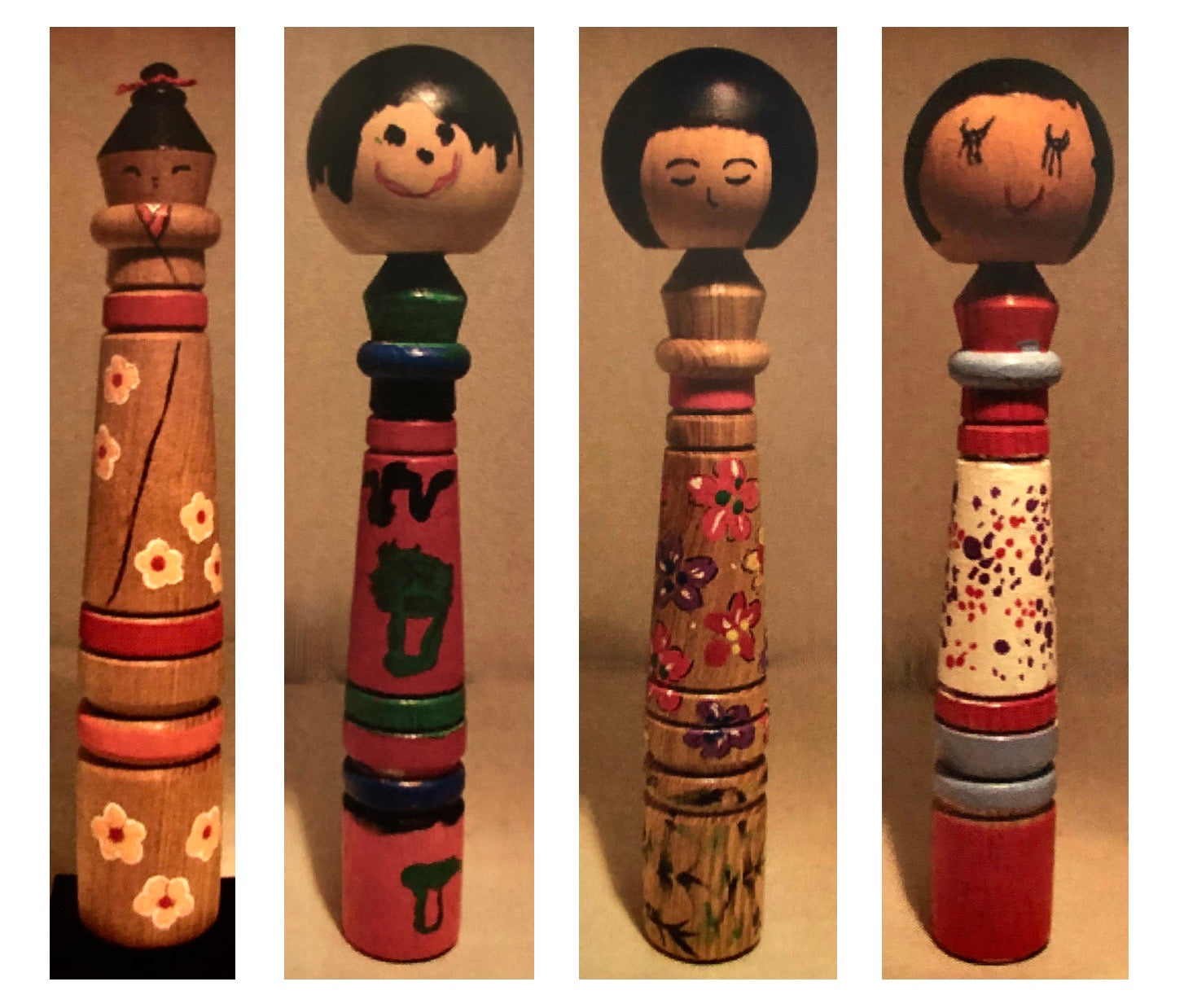As opposed to the painted and decorated Sosaku Kokeshi, this article will focus on the relief-carved Kokeshi that emphasizes the natural qualities of the wood employed. In Japan, nature, religion, and society are deeply intertwined. Nowhere is this more evident than in the mind of a Kokeshi woodworker, whose philosophical and spiritual beliefs are at the heart of their craft, and which permeates the wooden form. We were told, (when we first began researching Japanese lathed-turned dolls), that the Japanese carver imbued “soul” into every piece, for it is inspired by centuries of cultural tradition and everyday life. Shinto – the indigenous faith of the Japanese people – places a spiritual essence in all things, and in this case, wood. It’s this belief in ‘animism‘, (the soul or natural qualities), that inspires Japanese woodworkers to work with, rather than against, nature. From respecting the natural curvature and anomalies of wood, while using wood that is salvaged, the Japanese woodworker shows his/her love of ‘nature-worship’ through the natural growth within the forest, which has long been revered as a vehicle to house the spirits of Japan’s people and its indigenous faith, Shintoism.

The creation of Sosaku Kokeshi can rightly be called, “the first type of decorative art” created by the Japanese Kiji-shi or kiji-ya, (woodcarver). Sosaku, (Creative), Kokeshi doll making began in the early 1940s, grew and flourished in the 1950s, through the 60s, and well into the 70s. This thirty-year-plus period produced the greatest, most enduring, and most popular artists of the genre, with many of them gaining international recognition: recognition which has followed these prolific wood artists into the 21st century. Loggers and simple farmers living off the land, or in natural forests deep in the heart of the mountains, were the creators. Originally numerous woodworkers apprenticed under Traditional Kokeshi masters, but artists with varied education in fine arts, lacquerware, painting, photography, text design, and even chemistry and engineering, began infusing their personalities into contemporary work born out of the Traditional, that made up the original eleven Kokeshi families. The Kiji-shi craftsmen would sometimes abandon their itinerate existence and settle down to find work, especially in the vicinity of a hot-spring resort, where they could sell their dolls as souvenirs. This animistic belief in the ‘spirit of wood’ extends to the crafts made by both men and women artisans. Kokeshi sculptures differ from region to region, but particularly the northern regions brought out the exquisite works of the lathe-turner to the culture and tradition establishing the surrounding environment.

As with most cultures, humankind produces, uses, and discards great volumes of material, (not always waste); but the Japanese believe that all objects have a spirit, (kami), and the term mottainai, too good to waste has been part of their vocabulary for many centuries. Indeed in the case of Kokeshi, their humble beginnings arose from the ‘reuse’ of pieces of scrap wood. In Sosaku Kokeshi's design and fabrication, studies of the human figure are not as important as exhibiting the spirit of the wood through the sensitivities to textural qualities and Mokuri-bako (wood grain). Different methods and types of wood carving, including chip carving, relief carving, chiseling, and harmonic chatter work, (Birikan’na), along with wood burning techniques, preserve the qualities of natural wood, embellishing only through texturing the unpainted surface.
The following woods are used singularly or in combination when crafting Kokeshi from wood in the nearby forests. For identification, shown are the wood samples, as well as their name, in English and in Japanese.
There are the preferred woods for making Kokeshi dolls but the favorites are Dogwood (Mizuki), Keyaki (Japanese Zelkova), with the most popular being Cherry (Sakura), Maple (Momiji), Camellia (Tsubaki, Magnolia (Honoki), Bamboo (Take), Cedar (Yakusugi), Persimmon (Paulownia), and last but not least Pagoda (Eniyu) which has a rich, dark grain, providing an unusual quality to the carved Kokeshi. Trees are cut and dried during winter time, and artisans continue to dry them enough to shape them on a Wood Turning Lathe. After turning, carving, and painting, (watercolor based or lacquer pigment), the doll is typically finished with natural or colored candle wax, (Roseau no ro), clear lacquer or left unsealed.





